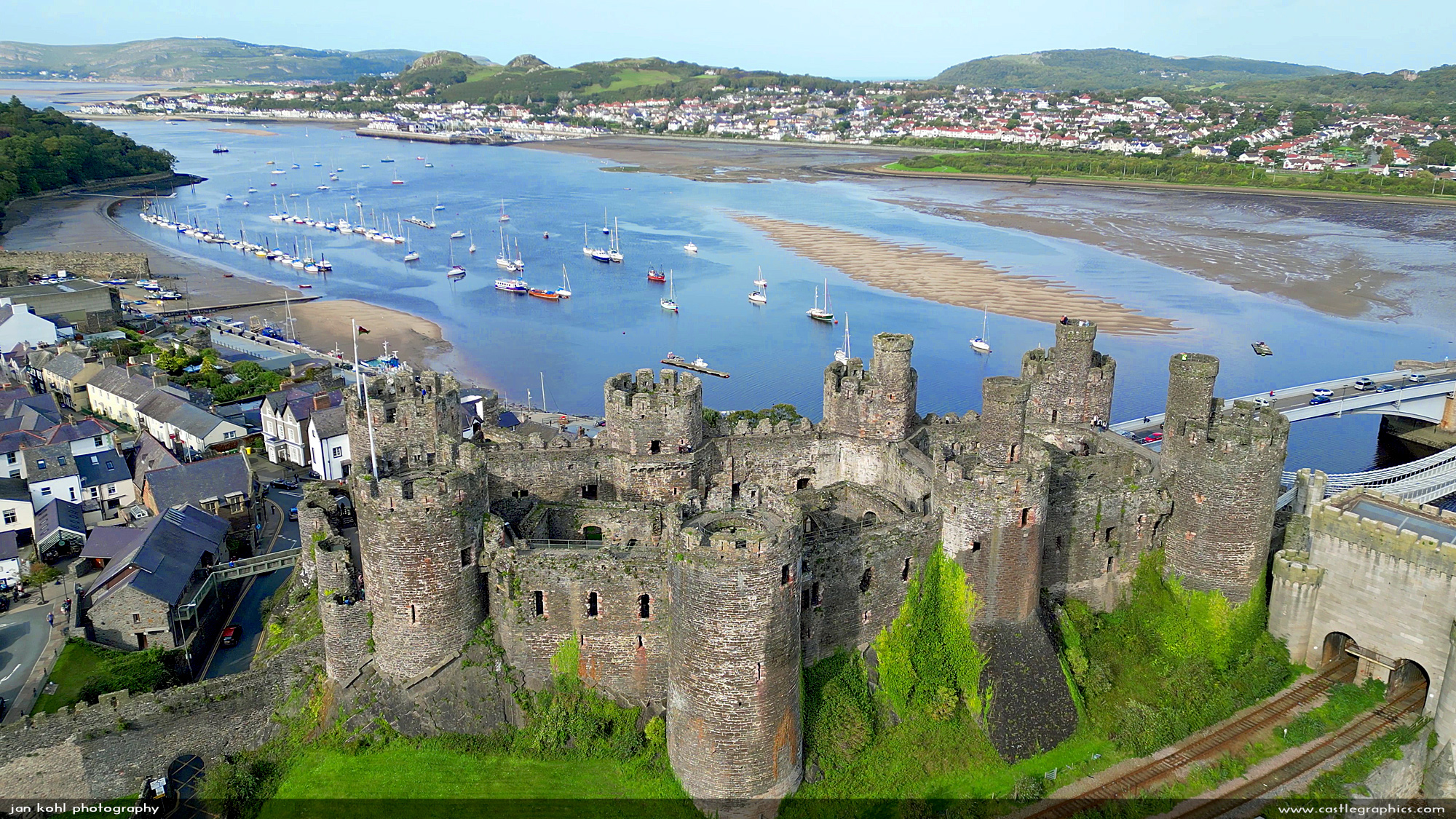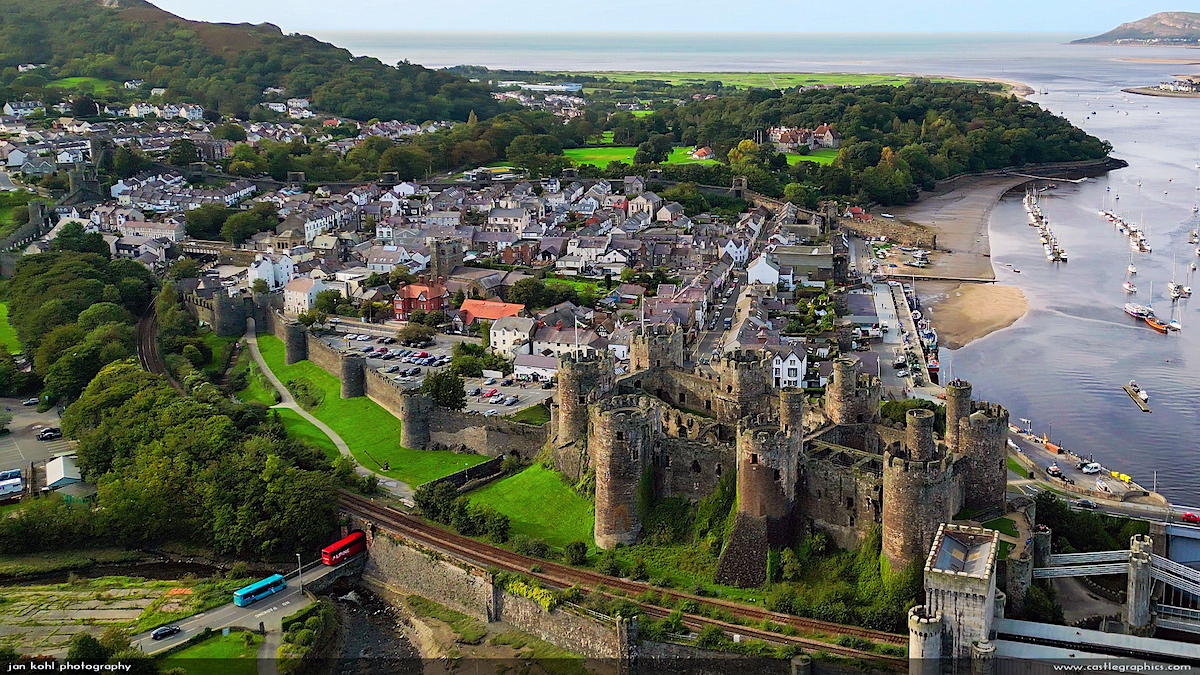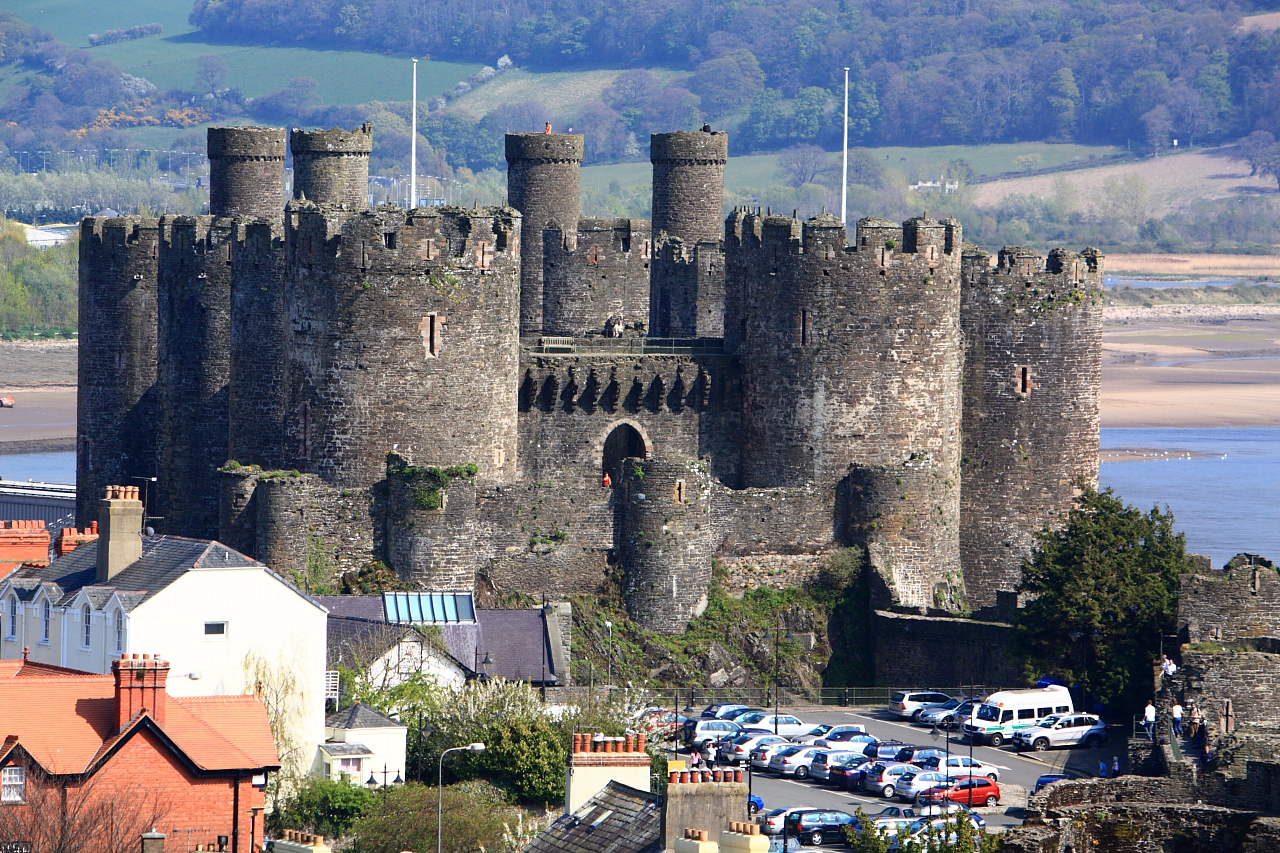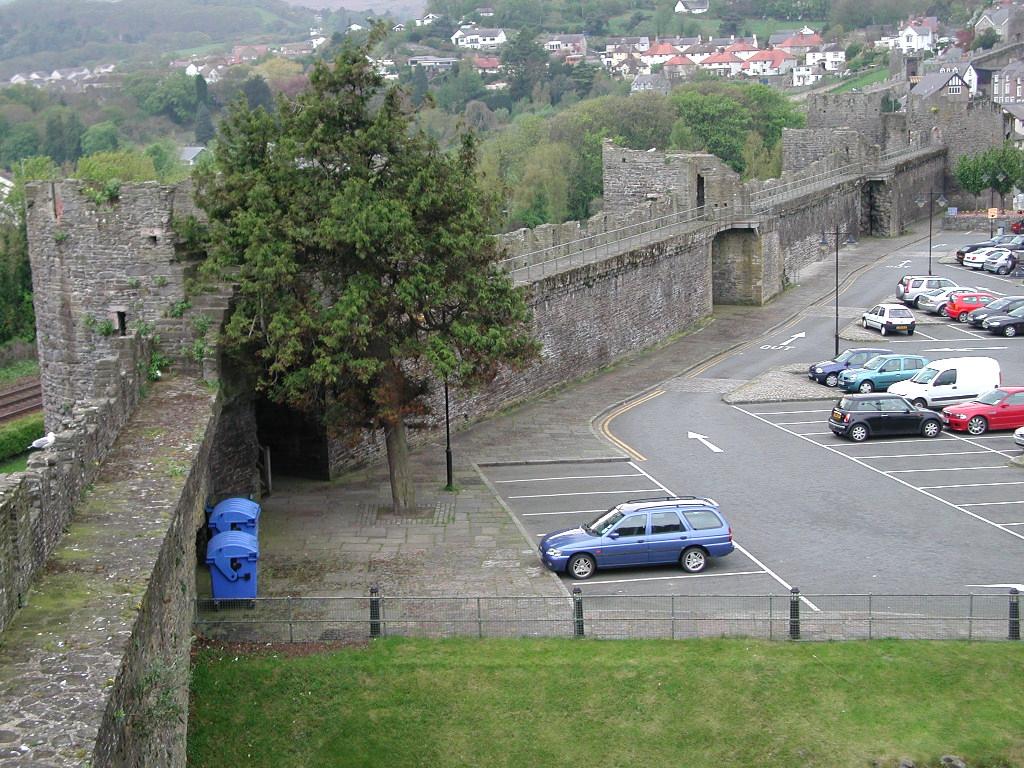|
Although the interior of the castle is not nearly as complete as Caernarfon, the rectangular shaped interior is unique among Edward's castles. The different sections rise to three distinct heights in a terraced fashion, reminding one a little of the Inner Ward structure at Chepstow Castle in southeast Wales. After our assault on the castle was complete, we decided to explore the town. Conwy is a small town with narrow one way streets. In the town square stands a statue of Llywelyn ap Iowerth, or Llywelyn the Great (d.1240) the founder of Conwy and one of Wales' most heroic and popular medieval leaders. The statue is painted according to Llywelyn's supposed heraldic colors, and forms part of a small fountain that serves as the centerpiece for the town square.
Conwy is a town that time has simply chosen to pass by. Despite a few modern shops, Conwy still looks very similar to the town Edward envisioned some 700 years ago. The ancient town walls, castle and simple streets offer very little to remind the visitor of the modern world. Conwy is something of a paradox. Originally a symbol of English domination of Wales, in time the Welsh managed to reclaim the town, replacing English oppression with its own medieval character. Only at Conwy and St. Davids did we get the feeling of being transported back to ancient Wales.
After having dinner at a local fish & chips shop we decided to take on the town walls. The walls are remarkable for their state of preservation, forming almost a complete circuit around the town. Only a small section near the quay is inaccessible, and even here, the ruins of the wall have been incorporated into the existing buildings. The walls are 1400 yards in length and are flanked by twenty-one towers and three double tower gateways, a constant reminder of the mighty castle looming in the distance. Conwy Castle dominates the skyline from literally all points along the wall. The spur wall projecting 60 yards from the end of the quay offer some of the best views of the castle, including incredible floodlit nighttime views.
Our last night in Conwy was special for a couple of reasons. After spending the day visiting Beaumaris and Caernarfon castles, we decided to try some local Welsh cuisine back in Conwy. We chose the Erskin Hotel, where we dined on grilled lamb steak, potatoes and vegetables. Finishing dinner at 10:30, we made our way back to the town wall to view floodlit Conwy Castle at night, and were rewarded with a spectacular sight. I had seen photographs of the floodlit castle, although they failed to prepare me for the real thing. All eight of the castle's towers were individually lit with spotlights, along with sections of the curtain wall and the old suspension bridge. During our vacation there were several locations at which we could have easily lingered for hours; stately Raby Castle, the Pembrokeshire coast at St. Davids, the parks at Raglan and Carew castles, Hadrian's Wall, and perhaps most of all, the town walls at Conwy. Standing on the wall viewing the castle, I felt as though I finally understood Conwy's meaning and place in medieval Welsh history. Llywelyn the Great, King Edward and his castle builder, James of St. George, and all the Welshmen who died fighting against what the castle stood for, still make their presence felt in this ancient medieval town. It had taken almost two days, be we had finally arrived in Wales.
We awoke the following morning, had breakfast, and checked out of the hotel. Conwy was ultimately a powerful reminder of why we came to this marvelous place called Wales. Our two days and nights in Conwy were probably my favorite part of the trip. Visiting Raby and Lincoln stirred Parthene's medieval roots, while Conwy and St. Davids had the same impact on me. Departing the area through the beautiful "Vale of Conwy," we were excited to finally be on our way to St. Davids, but still a little sad that we had only spent two days in the remarkable Welsh town of Conwy.
|







 ords cannot do justice to Conwy Castle. The best, simple description is found in the guidebook published by CADW, the Welsh Historic Trust, which states: "Conwy is by any standards one of the great fortresses of medieval Europe." Conwy along with Harlech is probably the most impressive of all the Welsh castles. Both were designed by
ords cannot do justice to Conwy Castle. The best, simple description is found in the guidebook published by CADW, the Welsh Historic Trust, which states: "Conwy is by any standards one of the great fortresses of medieval Europe." Conwy along with Harlech is probably the most impressive of all the Welsh castles. Both were designed by 










 Learn more about
Learn more about